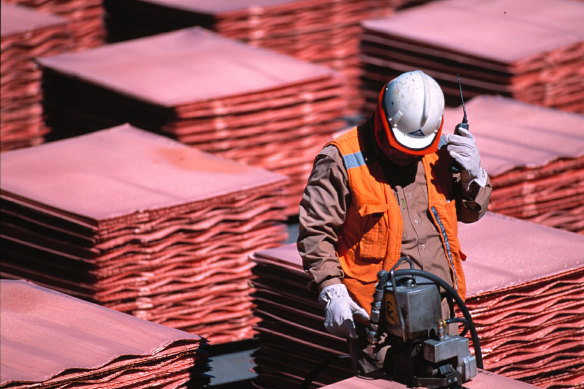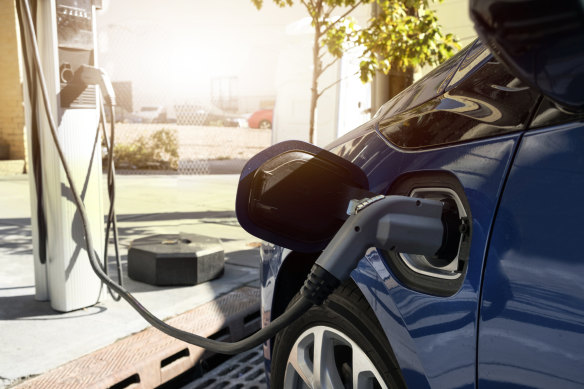BHP joins hunt for Serbian copper to power green energy boom
BHP, the largest Australian miner, has struck a new deal to explore for copper in Serbia as it accelerates efforts to boost its exposure to metals that will be vital to building electric cars and green energy technology.
The Melbourne-based mining giant’s agreement with Canada’s Mundoro Capital gives it the option to take a stake in three exploration areas that Mundoro holds in the Timok region of eastern Serbia. Copper is considered one of the key building blocks of the clean energy revolution, used in electric vehicles, wind turbines and power grids’ transmission lines.
Miners such as BHP have long stated a desire to expand their output of the red metal.Credit:AP
“Mundoro welcomes BHP as an exploration partner that recognises the potential of further exploration in the western Tethyan Belt,” Mundoro chief executive Teo Dechev said.
Top mining companies across the world, including BHP and rival Rio Tinto, have been ramping up efforts to diversify into so-called “future-facing” commodities, those standing to benefit from the growing global trends towards decarbonisation.
BHP, which derives most of its earnings from the steel-making material iron ore, is targeting copper and nickel, two minerals the world needs much more of in coming years as countries race to electrify transport and reach “net-zero” emissions targets. Electric cars consume up to four times as much copper as internal combustion-engine vehicles, BHP says, while nickel is a necessary ingredient in lithium-ion batteries.
Last month, BHP signed a binding $9.6 billion takeover offer to acquire Adelaide-based copper and nickel producer Oz Minerals, which has two copper and gold mines in South Australia, located either side of BHP’s vast Olympic Dam mining hub.
The Oz Minerals deal, if it succeeds, will make BHP’s biggest acquisition since it paid $US12 billion for US shale gas producer Petrohawk in 2011.
BHP last year sold off its global oil and gas division, partly to free up its ability to spend on more copper and nickel. However, the company remains a significant producer of fossil fuels with several coal mines across Australia, most of which produce coking coal for the steel-making sector.
Rio Tinto has also looked to Serbia to increase its supplies of “future-facing” minerals of copper and lithium. However, its plans to develop the $3 billion Jadar lithium mine in western Serbia, which would have been the largest in Europe, suffered a significant setback last year when the Balkan nation’s government tore up its permits in response to escalating community protests over its potential impact on the environment.
Copper and nickel are crucial ingredients in electric vehicles.Credit:Getty
The future of Rio Tinto’s Serbian project remains in limbo, but the company has not given up hope that it may eventually proceed.
Meanwhile, in December, Rio Tinto finalised a multibillion-dollar deal to buy the shares it did not already own in Toronto-listed Turquoise Hill Resources to lift its exposure to the giant Oyu Tolgoi copper and gold mine in Mongolia. It has also recently acquired the undeveloped Rincon lithium brine project sitting within the so-called “lithium triangle” of South America.
Copper presently accounts for about 20 per cent of BHP’s underlying earnings, while iron ore makes up more than 50 per cent. Based on long-term price forecasts, copper could make up more than 40 per cent of earnings by 2030, according to analysts. “This would support the strategy to have about 50 per cent of the portfolio, longer term, made up from copper, nickel and potash,” investment bank JPMorgan said.
The Business Briefing newsletter delivers major stories, exclusive coverage and expert opinion. Sign up to get it every weekday morning.
Most Viewed in Business
From our partners
Source: Read Full Article



